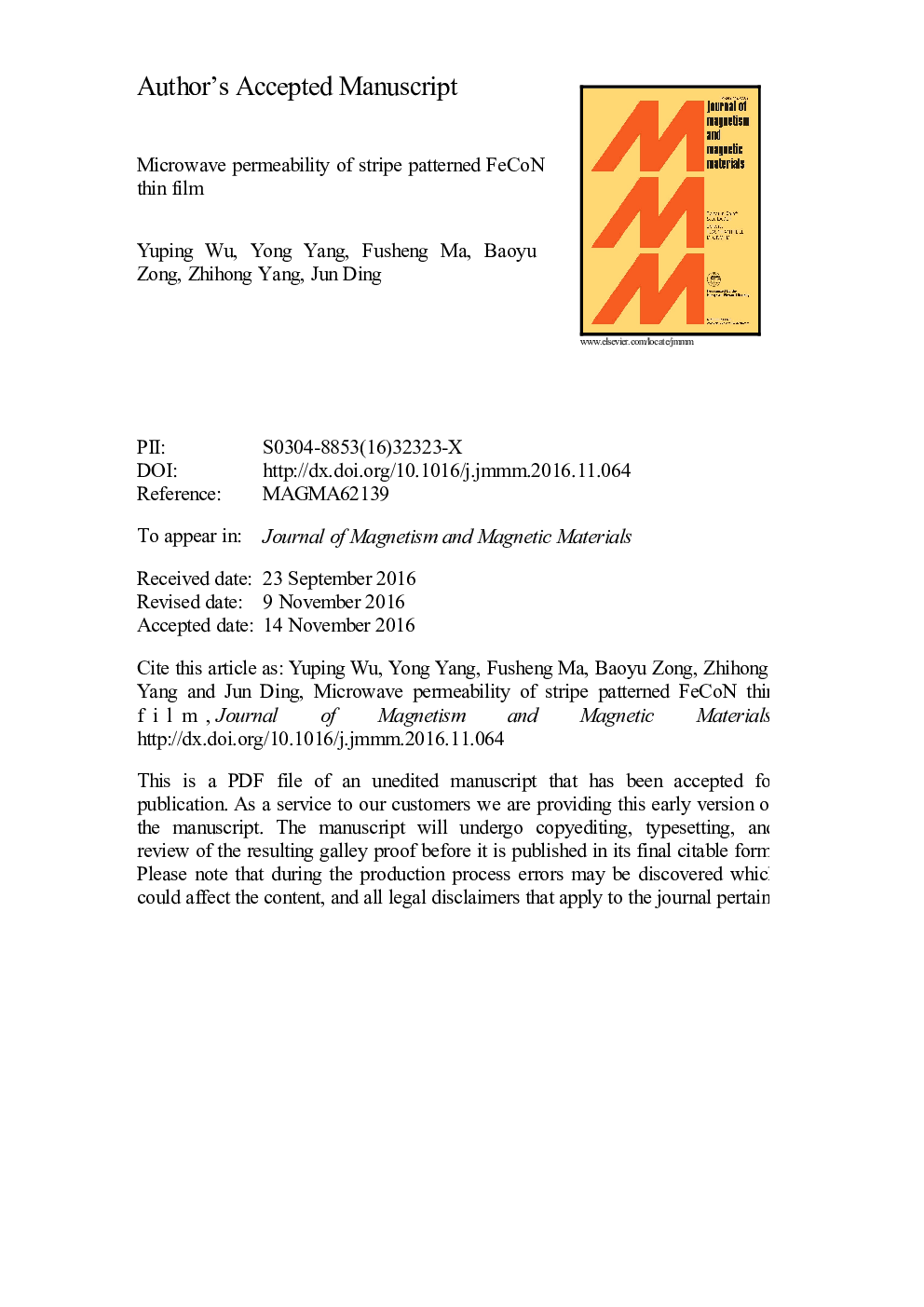| Article ID | Journal | Published Year | Pages | File Type |
|---|---|---|---|---|
| 5490689 | Journal of Magnetism and Magnetic Materials | 2017 | 15 Pages |
Abstract
Magnetic stripe patterns are of great importance for microwave applications owing to their highly tunable microwave permeability by adjusting the geometrical dimensions. In this work, stripe patterned FeCoN films with 160 nm thickness are fabricated by using standard UV photolithography. Their microwave permeability are investigated systematically via both experiment and micromagnetic simulation. The good agreement between experimental and simulation results suggests that stripe width is crucial for the microwave magnetic properties of the stripe pattern. It is demonstrated by simulation that with increasing stripe width from 1 to 80 µm the initial permeability shows a continuous growth from about 8-322, whiles the resonance frequency drops dramatically from 18.7 to 3.1 GHz at 4 µm gap size. Smaller gap size would result in slightly increased initial permeability due to larger magnetic volume ratio, accompanied by decreased resonance frequency because of stronger magnetostatic interaction. Moreover, the experimental investigation on stripe length effect indicates that the stripe length should be kept as long as possible to achieve uniform bulk resonance mode and high permeability value. Insufficient stripe length would result in low frequency edge mode and decayed bulk mode. This study could provide valuable guidelines on the selection of proper geometry dimensions of FeCoN stripe patterns for high frequency applications.
Related Topics
Physical Sciences and Engineering
Physics and Astronomy
Condensed Matter Physics
Authors
Yuping Wu, Yong Yang, Fusheng Ma, Baoyu Zong, Zhihong Yang, Jun Ding,
